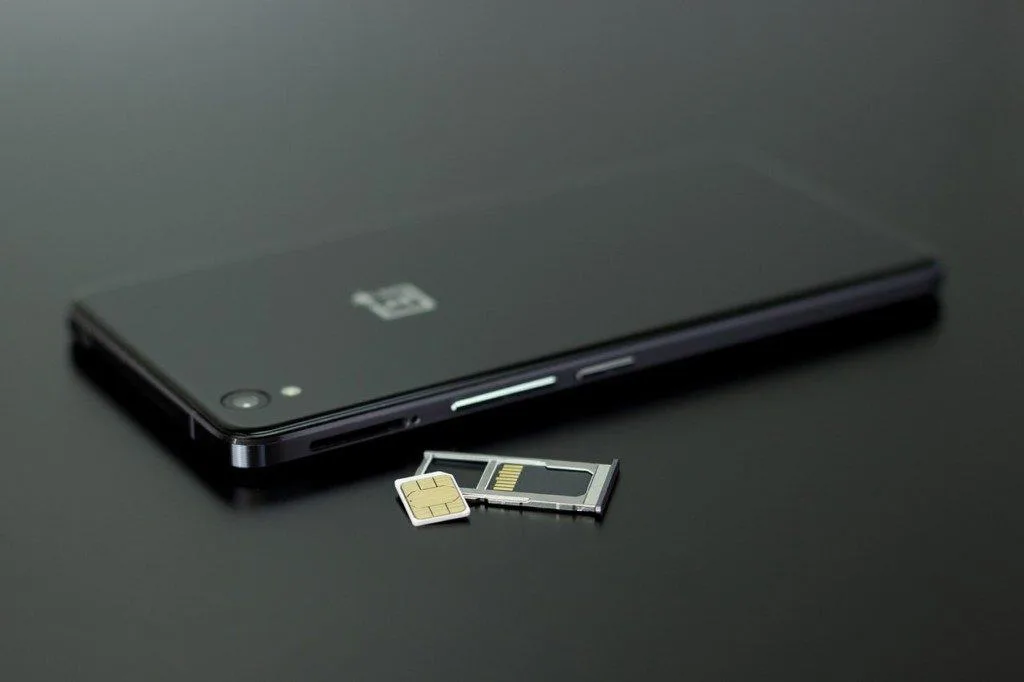When it comes to traveling, especially in international places, your cell phone may be subject to what is called roaming. Roaming is a situation in which a mobile phone is used outside the range of its home network. This can create unfortunate service interruptions as well as pricey added data charges. However, most travelers consider their phones to be essential items to bring. In this case, they should know everything possible about roaming.
So, what do you need to know about roaming? If you are planning to travel outside your cell phone network, you need to know what roaming is, how it works, and ways to avoid expensive charges without sacrificing access to data and communication. Understanding these aspects of roaming will allow you to safely and effectively travel with cell phones, both nationally and internationally.
Being without cell phone service can be everything from concerning to anxiety-provoking, particularly in an unfamiliar area or when far from home. Most travelers assume that their phones will work nearly everywhere they go. Roaming, in general, allows this to be the case. However, the lack of information about roaming can lead to unexpected and distressing costs on top of travel expenses.
What is roaming?
Roaming is a term used in wireless telecommunication that indicates a mobile device is outside the range of its home network and has connected to a different, available cell network. This benefits cellular customers when they travel outside their geographical network coverage area because they can use a visitor network to make and receive calls, send text messages, and use data.
Most cell phone users would not even consider traveling without their phones and for a good reason. Cell phones are crucial in an emergency and can provide access to essential and helpful travel information, such as:
- Means of communication
- Local medical services
- Maps
- Navigation
- Accommodation
- Entertainment
- Transportation
- Tourism advise and suggestions
- Language translation
- Cultural explanations
- Camera capabilities
- Connection to social media sites
However, though roaming is beneficial for receiving a cellular signal when you are outside your personal phone carrier’s operating region, it can negatively impact your phone bill. Roaming nearly always incurs expensive surcharges for utilizing another mobile service.
As a result, roaming charges can add hundreds and perhaps even thousands of dollars to your cell phone bill if you are not aware of how to mitigate them. For most cell phone plans, roaming (especially international) is not included and therefore is subject to much higher rates. These roaming charges may apply to sent and received voice calls, text messages, picture messages, and especially data usage.

How does roaming work?
Cell phone users that are in the geographic area covered by their wireless provider are considered in-network. Once users are out of range of this covered area, they are roaming. Within the United States, most domestic carriers have agreements with other networks so that cellular service is not interrupted even when users are technically out of the network. India is another country that has national roaming.
International roaming occurs when someone uses their cell phone carrier’s service outside national or domestic geographical borders. Most popular wireless carriers have features that allow for international roaming, depending on the type of phone being used and the provided services. Unlike domestic roaming, international roaming incurs added costs.
Cell phone roaming works as a function of the capabilities of the phone itself and the services provided by wireless mobile networks. Cell phones are designed to connect to the mobile operator associated with their purchased service. For a cell phone to have roaming capabilities, it must be compatible with other carriers outside its home network.
This compatibility is generally not an issue when it comes to roaming within the same country. However, it can be a big issue during international travel. In other words, phones that are connected with national, domestic carriers may not have the compatibility to connect to networks in foreign markets; therefore, they may not work during international travel.
The United States, Canada, Mexico, and most South-American countries use the GSM 850/1900 MHz frequencies for cellular connections, while the rest of the world uses GSM 900/1800 MHz. Check whether your device is compatible with these frequencies or not.
Roaming is dependent on a cell phone’s connectivity, and even more so on available wireless networks. Two carriers are required for roaming to work: the home network and visited carrier. These operators generally establish a reciprocal roaming agreement in which customers from one carrier can roam when in the area of the other network’s coverage, and vice-versa.
These roaming features benefit customers in that they can continue to use their mobile devices when out of their network area. However, carriers are aware of the dependence of their customers on roaming capabilities. This allows cellular networks to incorporate roaming charges—especially when it comes to international travel. Though most domestic roaming services are regulated, international roaming service charges can reach outrageous levels.
What is national roaming?
National, or domestic, roaming takes place when cellular customers move out of range of their home operator and connect with another mobile operator within the same country or nation. Each nation and/or its domestic cellular providers internally regulate domestic roaming and its cost. Generally, domestic wireless carriers arrange mutual and reciprocal agreements to facilitate reasonable and uninterrupted roaming within national borders.
With more extensive cellular networks, stronger coverage, and the encouragement of competition among mobile operators, the cost of domestic roaming in the United States is not as prevalent as it once was. Most American wireless providers include “nationwide” plans that allow devices to connect for free to non-network providers in all states as well as the territories of US Virgin Islands and Puerto Rico.
Essentially, with these nationwide plans, customers are still paying for their service and roaming abilities. What the providers refer to as “free” roaming is based on the premise that there are no additional charges incurred for domestic roaming, as the service price has already been factored into the contract and phone bill.
What is international roaming?
International roaming is based on the same principle as national or domestic roaming in that a customer has switched from their primary network to a new one due to being geographically out of range. Some of the major wireless carriers have roaming agreements with other networks in many countries, but customers generally have to pay for the privilege of using these international roaming services.
Most travelers expect to bring their cell phones on international trips and utilize them in the same manner as they would at home. However, international roaming rules and rates can be complicated to understand and can vary depending on the wireless carrier.
Therefore, travelers need to research and contact their wireless providers to prepare for international roaming charges and prevent interruption or absence of service during their trip. Speaking directly to your domestic network service representative allows you to ask all relevant questions and receive clear and accurate responses, so there is little to no policy or rate confusion.
Here are the recommended steps to avoid any international roaming issues:
- Research international roaming agreements with your wireless carrier: Your service provider can confirm whether your cell phone is network compatible and will operate in the country you plan to visit. In addition, it is vital to research which functions will be operational such as voice calls, text messaging, and data usage.
- Check roaming rates with your wireless carrier: If your phone is operational during your international travel, you can activate international roaming before your trip. Since most domestic service plans do not cover international roaming, higher usage rates may apply to all cell phone functions, including communication and internet use. Your service provider can confirm rates and options.
- Track all international roaming usage when traveling: Your service provider can confirm how to track usage while abroad to remain within your plan and avoid additional penalties and charges due to international roaming.
Research and communication with your wireless carrier are the best ways to prepare for using your cell phone during international travel. This will alleviate any misinformation as to how your cellular service is expected to operate abroad, as well as prevent any unexpected service problems or international roaming charges.
I have also written about the roaming options of many providers around the world, such as ones in the United States, United Kingdom, Australia, New Zealand, India, Malaysia, and many more.
Suggestions for international roaming and travel with cell phones
The primary strategy for avoiding high international roaming charges and service inconveniences when traveling with cell phones is to limit and reduce cellular data usage. Generally, data overages are what drive up the costs when it comes to international travel with cell phones.
This seems counter-intuitive and problematic, considering that international travel would most likely result in the need for considerable data usage. Therefore, it is helpful to know suggestions for international roaming and travel with cell phones.
Turn roaming off
Cell phone users can turn their roaming off through their phone’s settings feature. Turning roaming off during international travel may prevent the temptation to send and receive data through social media apps, video streaming platforms, or general web browsing. As a result, you will not get high roaming bills.
Eliminate non-vital app usage
If turning roaming off and eliminating cellular data use altogether during international travel seems too extreme, another suggestion is to turn off non-vital apps. This allows your phone to download data exclusively for the apps you need rather than allowing your non-vital apps to use up data.
Non-vital apps can be disabled or deleted during international travel and re-activated or re-loaded upon return. This is beneficial due to the lessened risk of incurring severe roaming charges by eliminating the potential for non-vital apps to send or receive data.
Avoid streaming
Streaming videos and movies can be tempting to pass time during international travel. However, streaming is extremely data-intensive and will drive up roaming charges to excessive amounts. Therefore, it is suggested that cell phone users avoid streaming any content while traveling abroad.
The good news is that some apps allow you to store downloaded content when it comes to movies and videos. Travelers can download material to their phones before their trips to eliminate streaming and limit excessive cellular data usage.

Eliminate texting
Texting can be deactivated and dismissed as potential incurred data charges during international travel, depending on your phone’s settings (e.g., multimedia messages). This is an especially helpful suggestion if you are using messaging apps, for which text messages would be considered data while abroad. Cell phone apps such as iMessage can be disabled during international travel and then re-activated upon returning home.
Another method of reducing cellular data to avoid high international roaming charges is to leave cell phones in “airplane” mode during travel. Of course, it is difficult to cut off communication altogether, especially when texting is so common and prolific. One way to remain connected is for those who wish to participate to download apps such as FireChat, which allows group messaging without internet or cellular network service. However, bear in mind that these apps have been criticized for privacy issues.
You can also connect to WIFI hotspots so that you can use internet-based apps like Facebook Messenger, Whatsapp, and Skype to keep in touch with your friends and family. Most popular holiday destinations have plenty of hotspots you can connect to.
Get a temporary international plan or phone
For those who know that they need their cell phones to operate as much and as well abroad as at home, many wireless providers offer temporary international roaming and data plans as an option. These plans come at a higher cost than regular domestic service. However, they may be beneficial in helping to avoid data overage charges while still allowing users the comforts of frequent cell phone usage during their travel.
In addition to a temporary international plan, there are specialized international cell phones that can be purchased through certain networks. This also allows for more extensive cell phone and data usage while traveling since these international cell phones often provide reduced data and international roaming rates.
SIM Cards
A SIM (subscriber identification module) card is a “smart” card inside a mobile phone that contains an identification number that is unique to the phone’s owner. A SIM card stores personal data and prevents the cell phone from operating if it is removed.
This removal can be beneficial for international travelers with GSM (Global System for Mobile communications) phones since it indicates an international standard for cellular service. GSM phones provide flexibility for international travel in that the domestic (national) SIM card can be removed and replaced with a new international SIM card.
In other words, travelers who plan to spend a significant amount of time abroad may decide that it is cost-effective to purchase an international phone plan with a local SIM card. They can then remove their domestic carrier SIM card and use the international carrier card until they return home. Once home, they can remove the international SIM card and replace it with their home SIM card.
Rates for international SIM cards vary depending on the type of mobile phone, location, and data usage. Some plans allow a purchase of a certain amount of data to be used in available destinations for a limited amount of time.
Other international SIM card plans work on a pay as you go or prepaid system so that customers are only paying for their actual data usage. These roaming prices also vary by location, so that the money added to or provided by the international SIM card is depleted based on rates of usage in each destination.
Check out my review of the most popular international SIM cards out there!
Some mobile devices have eSIM equipment, meaning SIM information is digitally programmed into the phone without the use of a physical SIM card. This technology is beneficial in that it can handle service with multiple carriers.
In this case, cell phone users would not need to physically change out SIM cards to switch to a temporary international plan. Instead, travelers can visit a retailer that sells eSIM “packs” and install it through the phone’s settings. It is recommended to research the availability of eSIM technology and carriers in their destination country.

International roaming with iPhones
Before traveling internationally with an iPhone, it is best to find out about the connectivity and capabilities in the area of destination. Apple provides such information for all iPhone models and their potential for use in other countries.
Most iPhone wireless carriers have international plans for users to purchase when outside their in-network areas. This allows iPhone owners to use their phones abroad just as they do at home, but usually with a per-day roaming charge. It is recommended to contact the cellular provider’s customer service to let them know where you will be traveling so that they can assist you in finding the best international plan available.
For those iPhone users who wish to buy an international SIM card, it is essential to know before travel whether your iPhone is unlocked or not. A locked iPhone indicates that the phone is “locked” to the carrier and cannot be used with a different SIM card plan.
If this is the case, you can call your carrier and request the phone to be unlocked. Some services charge an unlocking fee, so it is advisable to mention that you are traveling and not leaving the network. This may help avoid an unlocking fee. Once the phone is unlocked, other SIM cards can be purchased and used.
Cell phone users with iPhones can also rely on WIFI sources during international travel rather than purchasing any international roaming plans. The key is to determine how much travelers intend to use their phone when abroad and then research options ahead of international travel, so they are prepared and not inconvenienced by unexpected roaming issues or charges.

International roaming with Android phones
Many of the same international roaming principles for iPhones apply to those for Android phones. The primary difference between Android and iPhones is the operating system (OS) which is the software that allows the device to work.
As every Android phone manufacturer may use a different loader, skin, or launcher, Android phone users should contact their domestic wireless provider to research and gain information regarding phone connectivity and capability during international travel. This would pertain to international plans and SIM cards as well.
One feature that comes with Android phones that may be helpful is that it alerts its user when it is roaming. Android phones contain a roaming icon in the status area of the screen that appears when the phone is outside the in-network signal area.
As with iPhones, Android cell phone users should be as prepared as possible for international travel by researching information particular to their phone and wireless service and contacting their network provider for guidance.

Travel and Roam “Old School”
It is almost impossible to remember how to travel was navigated before the convenience of cell phones. The idea of using physical maps and arranging overseas travel accommodations without the internet seems old-fashioned and uncomfortable. However, it was somehow managed quite well (shocking, right?). You can do so too.
This offline roaming is not to suggest that travelers, especially those taking trips to other countries, should not bring or utilize their mobile devices at all. Instead, those who travel offline report that there are rewards to traveling internationally and reserving mobile phone usage for emergencies only. Some of these benefits include:
- Being fully immersed in the moment and present surroundings
- Less pressure to spend time documenting travel
- Greater opportunity for directly experiencing the culture, landmarks, and other people
- Less screen time and more mindfulness
- More personal interaction and communication with fellow travelers or country residents
- Less distraction and a lowered risk of theft
- Appreciation of self-reliance
- Embracing chance events, journeys, or encounters
- Reduced connection to non-vacation commitments such as work, relatives, or social media accounts
- Less risk for expensive international cellular roaming charges

Of course, emergencies can occur during any kind of travel, and these situations can be especially scary when in international areas or far from home. Travelers should bring their cell phones and make sure that they have accessibility to outside networks just in case.
This is advisable not just for contacting others during an emergency, but for others to be able to contact you during an emergency while you are overseas or abroad.
Other than for emergency purposes, it is possible and potentially rewarding to organize an international vacation without depending on mobile devices while traveling. This can be accomplished through research and by planning thoroughly before taking a trip.
For example, vacation logistics can be reserved and organized ahead of leaving home. Vacationers can consult the internet for travel arrangements, accommodations, sight-seeing, directions, etc., and even construct their vacation virtually before they go to reduce dependence on cell phones.
For those who may be less fond of planning and would rather be more spontaneous, they can utilize in-the-moment resources when traveling. This may include asking locals for directions, advice, or recommendations as to where to go and what to do.
These interpersonal interactions can enhance international travel, especially as part of experiencing and learning the local culture. Most residents are happy to provide guidance to visitors as a means of being helpful and generating goodwill.

However you roam…
Cell phones are perhaps the most powerful devices available as a means of communication and access to information. They are a great source of convenience, especially when traveling. But due to different phone types and operating systems, as well as various connectivity services and capabilities across regions and borders, international roaming can be complicated and result in excessive charges for data usage.
However, international travelers can mitigate these roaming issues by doing the following:
- understanding the basics of roaming
- researching international roaming options and capabilities for personal cell phone
- researching international roaming rules and procedures through a domestic wireless network provider, including rates and contract agreements
- procuring international roaming plan or SIM card
- eliminating non-essential cellular data applications
- tracking data usage to avoid overage charges
- utilizing cell phone strictly for emergency purposes

International travel is more accessible and rewarding than ever, and staying connected through mobile devices and services is encouraging even more visitors to expand their travel destinations. This is beneficial as a means of understanding and exchanging cultural experiences and values, gaining geographical, historical, and international perspectives, and creating a global economy and community.
The best method of ensuring your international travel is safe, enjoyable, and compatible with cell phone use is to prepare. Travelers should determine their level of need and anticipated usage when it comes to their mobile devices before beginning their trip. This will allow them to figure out the best plan to accommodate international roaming without interruption of service or an outrageous phone bill.
Next Steps to Enhance Your Travel Experiences
Looking for the next steps to enhance your phone travel experiences? Here is what to do:
Support Phone Travel Wiz
It takes a lot of time to analyze, translate & review the SIM card options worldwide (especially to test them out).
Your support helps me keep producing impartial content by eliminating the need to recommend international SIM cards as the best local SIM card (but some of them CAN be useful).
Every Ko-Fi donation, one-time or monthly, helps me to spend more time creating local SIM card buying guides.
Check Out My Resource Page
Looking for the best companies and gadgets to enhance your travel experience?
Check out my travel resources page for the best companies to use when you travel!
Save money with international SIM cards, on plane tickets, bus rides, cruises & accommodation.
Besides that, I also list services and items I use to make my life easier – and I believe they will help you too!
Start Your Own Online Business – Make Money While Traveling
Do you want to learn how I started an online business that allows me to generate income while traveling?
In my starting an online business guide, I tell you which tools, services & products I have for this site and my YouTube channel.
If I can start a business about something I am passionate about (phone travel), then you can do it too!
Learn About Your Phone Travel Options
You can buy local prepaid SIM cards, international SIM cards, mobile hotspots, or roam internationally.
Each of these options has its pros and cons. Learn more about them, and find the best option for you.
Phone Travel Tips, Tricks & Hacks
I have written many articles with tips and hacks to save money on mobile costs while abroad. You surely want to check them out!
Sign Up for the Phone Travel Wiz Newsletter
Get updates related to the newest guides, videos & recommended products and services.
Moreover, I send you many tips and tricks on saving money while traveling every now and then.
Let's Be Social
Did you know that I have a YouTube channel covering everything you need to know about traveling with your phone?
A lot of useful videos are uploaded multiple times a week, and you do not want to miss out on them!
Learn More About Who Adu Actually Is
Who is the guy behind Phone Travel Wiz? Well, find out on the Ernest Adu about page!

